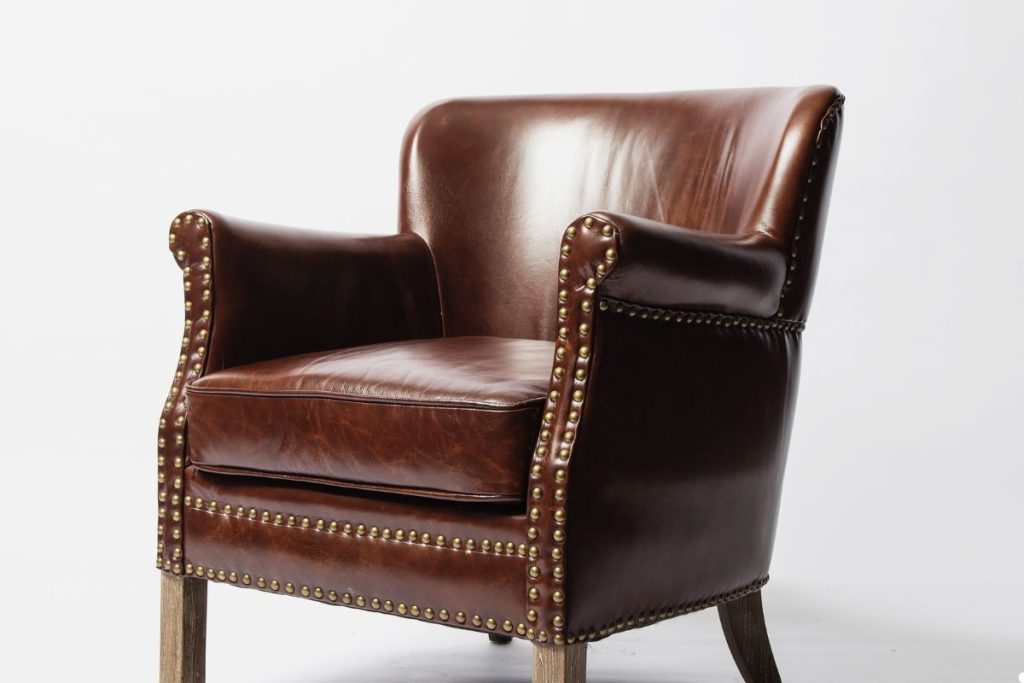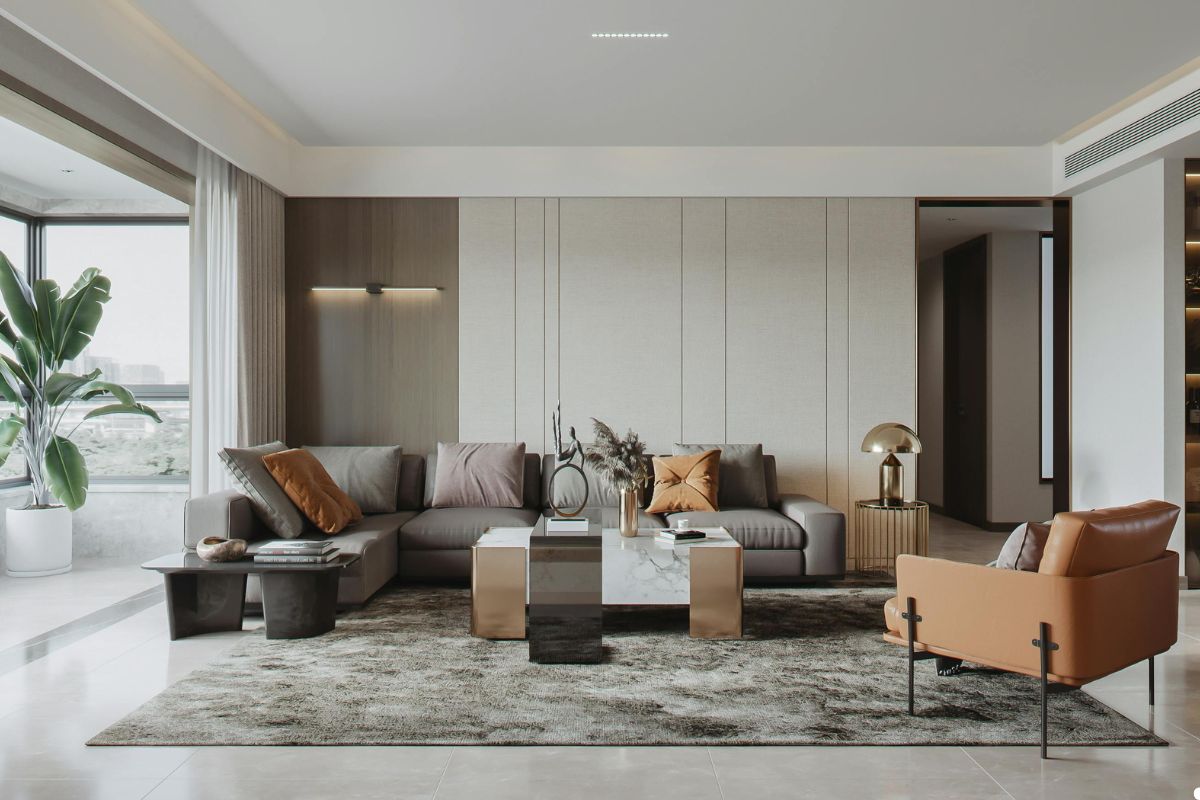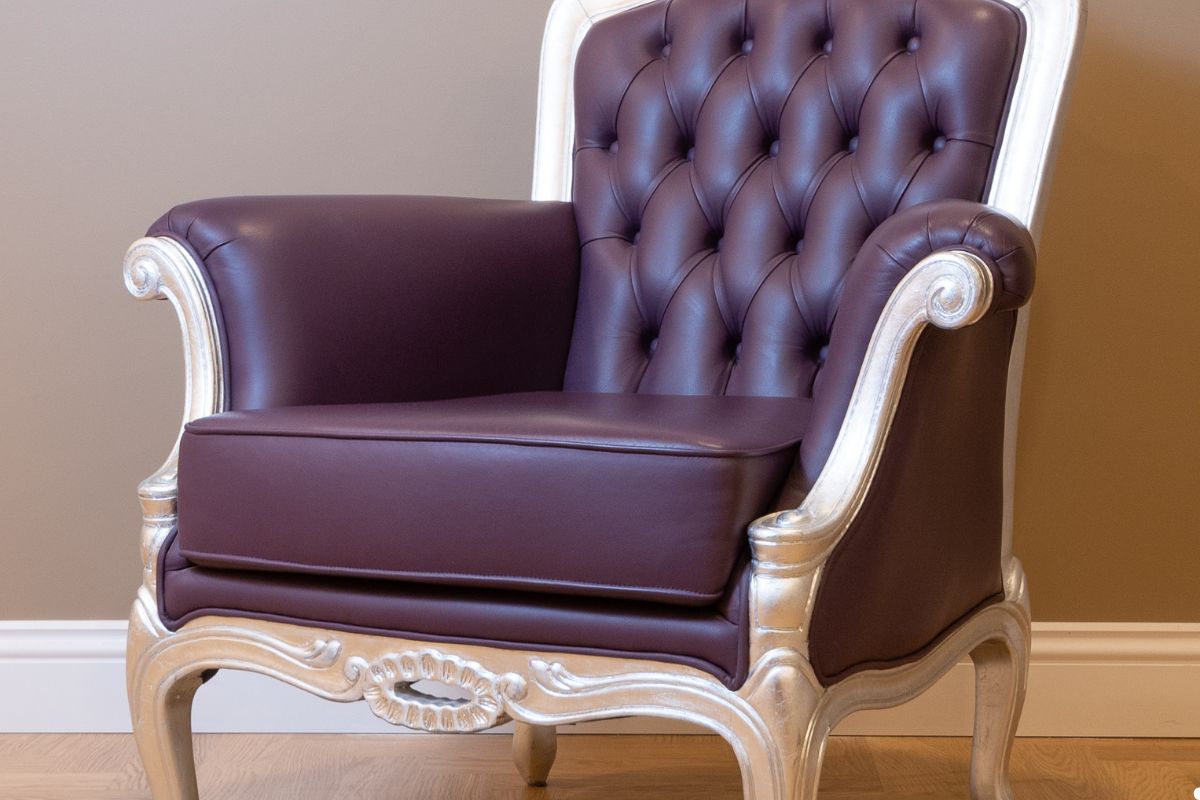
Deciding whether to reupholster your beloved sofa or chair versus buying a brand-new piece is a common dilemma for homeowners across the USA. The best choice depends heavily on several factors: the quality of your existing furniture’s frame, the cost involved in both options, the sentimental value the piece holds, and your desired style outcome. Generally, reupholstering is ideal for high-quality, sentimentally valuable, or uniquely shaped pieces where you want custom results, while buying new often makes sense for furniture with irreparable structural damage, severe comfort issues, or when the cost of reupholstery significantly exceeds replacement. Need help deciding? Call us today to speak with one of our upholstery experts and get a free consultation!
The Enduring Question: Refresh or Replace Your Furniture?
That favorite armchair has seen better days. The sofa fabric is worn, faded, or simply doesn’t match your evolving style. You’re faced with a choice: embark on a furniture restoration journey through reupholstery or head to the store (or online) for something completely new. It’s not always an easy decision. Both paths have pros and cons involving budget, time, environmental impact, and the final look and feel of your living space. Understanding the key considerations will help you make the most informed furniture update decision for your home. For those with classic or high-end pieces, especially heirlooms, leather furniture repair offers a way to preserve the original charm and craftsmanship.

Why Reupholstering Might Be Your Best Bet
Before dismissing your current furniture, consider the compelling reasons why reupholstery is often a fantastic choice. It’s more than just putting new fabric on an old piece; it’s about preserving value and creating something truly unique.
Preserving Quality and Craftsmanship
Older furniture, particularly pieces made before the era of mass production, often boasts superior construction. Think solid wood frames (like maple or oak), sturdy joinery (like dovetail or mortise-and-tenon), and quality springs that were built to last. Reupholstering allows you to keep this foundational quality furniture frame while updating its appearance. Replacing such a piece with a new item of comparable quality can be surprisingly expensive, as many modern, lower-priced options may use particleboard or weaker construction methods.
Sentimental Value and Family Heirlooms
Some furniture pieces are more than just functional objects; they carry memories and history. That armchair might have belonged to your grandmother, or the sofa could be where countless family moments happened. Reupholstering allows you to preserve these sentimental furniture pieces and keep cherished family heirlooms functional and beautiful for future generations, adapting them to your current home style without losing the connection to the past.
Customization and Unique Style
Buying new often means choosing from available stock, which might not perfectly match your vision. Reupholstery offers virtually limitless possibilities for customization. You get to select the exact fabric type, color, pattern, and texture. Want durable performance fabric for a busy household? Luxurious velvet for a statement piece? A bold print to inject personality? With reupholstery, you can achieve a truly custom upholstery look tailored to your specific taste and existing decor, right down to details like piping, tufting, or nailhead trim.
Environmental Considerations
In an era of increasing environmental awareness, choosing to reupholster is a sustainable decision. It keeps bulky furniture out of landfills, where it contributes to waste. Reupholstering reduces the demand for new raw materials (wood, metal, foam, fabrics) and the energy required for manufacturing and transportation associated with producing new furniture. It’s an eco-friendly way to refresh your home, aligning with principles of reuse and reducing your carbon footprint. Explore more about sustainable furniture options online.
Signs It’s Time to Invest in New Furniture
While reupholstery offers many benefits, it’s not always the right or practical solution. There are definite situations where purchasing new furniture makes more sense.
Poor Structural Integrity
The most critical factor is the furniture’s “bones.” If the frame is cracked, warped, significantly water-damaged, infested by pests (like woodworms), or made from low-quality materials (like particleboard or flimsy softwood) that are failing, reupholstery might be like putting a fancy coat on a crumbling foundation. Significant furniture frame repair can dramatically increase the cost, potentially making replacement a more sensible financial decision.
Significant Comfort Issues
Sometimes, the problem goes deeper than the fabric. If the springs are broken or sagging beyond repair, the padding is completely compressed and uncomfortable, or the fundamental ergonomics of the piece just don’t work for you (perhaps it’s too shallow, too deep, or lacks support), simply changing the fabric won’t fix the underlying comfort issues. Addressing major furniture comfort problems during reupholstery can add significant expense, sometimes nearing the cost of a new, more comfortable piece.
Outdated Style or Size Mismatch
Even with beautiful new fabric, the fundamental shape and scale of the furniture might be hopelessly outdated or simply wrong for your current space. A massive, overstuffed sofa from the 80s might overwhelm a smaller modern living room, regardless of the upholstery. If the core furniture style or size doesn’t fit your aesthetic vision or the room’s proportions, investing in reupholstery might not yield the transformation you desire.
Cost Effectiveness (Sometimes!)
This requires careful comparison. While reupholstering high-quality furniture is often cost-effective compared to buying new high-quality furniture, it might not be cheaper than buying a brand-new, lower-to-mid-range piece. Professional reupholstery involves skilled labor and fabric costs, which can add up. If your original piece wasn’t particularly high quality to begin with, the total cost of reupholstery could easily exceed the price of a readily available new sofa or chair.
Making the Call: Key Factors to Weigh
Ready to decide? Systematically evaluate these points for your specific piece of furniture.
Assess the Furniture’s “Bones” (Frame Quality)
Give the piece a good inspection. Is it heavy? That often indicates a solid wood frame. Does it feel sturdy, or does it wobble or creak excessively? Check underneath if possible – look for solid wood (not particleboard), strong joints, and intact springs. A quality frame is the best argument for reupholstering. Learn more about identifying quality furniture construction.
Calculate the Costs: Reupholstery vs. New
Don’t guess. Get at least one or two detailed quotes from reputable upholsterers. Ensure the quote includes estimated fabric costs (specify the type/quality you’re considering), labor, any necessary padding or spring repairs, and pickup/delivery fees. Then, realistically compare this total to the price of a new piece of comparable quality to what you’d have after reupholstering your current item. Don’t just compare it to the cheapest new option available. Get accurate reupholstery cost estimates.
Consider Your Time and Effort
Reupholstery isn’t instant. It involves choosing fabric (which can take time), finding and vetting an upholsterer, potentially arranging transport, and waiting for the work to be completed (which can take weeks or even months depending on the upholsterer’s schedule). Buying new is often faster, though delivery times can also vary. Factor in the convenience factor versus the customization benefits.
Define Your Style and Long-Term Needs
Be honest with yourself. Does the fundamental shape and size of the piece fit your current and future home decor style? Will it function well in your space for years to come? If you secretly dislike the silhouette or find it impractical, even the most beautiful new fabric won’t make you love it long-term. Sometimes a fresh start with a new piece is the better investment in your home’s future.
Breaking Down the Costs: A Closer Look
Understanding what drives the price can help clarify your decision. Reupholstery costs are primarily influenced by:
- Fabric: Prices vary wildly from budget-friendly synthetics to high-end natural fibers or performance fabrics. This is often the largest single cost component.
- Labor: This depends on the complexity of the piece (e.g., tufting, channeling, curves), the size, and the upholsterer’s skill and regional rates.
- Repairs: Fixing the frame, replacing webbing, or installing new springs/padding adds to the labor and material costs.
- Details: Customizations like contrasting piping, button tufting, or pattern matching require more time and skill.
New furniture costs depend on:
- Brand Reputation: Designer or high-end brands command higher prices.
- Materials: Solid hardwood frames, down-filled cushions, and premium leather cost more than particleboard frames, foam cushions, and basic fabrics.
- Construction Quality: Hand-tied springs vs. sinuous springs, quality joinery vs. staples.
- Retailer Markup & Sales: Prices fluctuate based on store overhead and promotional events.
Comparing reupholstery vs new furniture costs requires looking at items of similar underlying quality.
Finding the Right Upholstery Professional
If you decide reupholstery is the way to go, finding a skilled professional is crucial. Look for local upholsterers with good reputations. Check online reviews (Google, Yelp), ask for recommendations from friends or local designers, and look at their portfolios (before-and-after photos). Always get detailed written quotes from a couple of providers before committing. Ask about their experience with pieces similar to yours and their typical turnaround time. Finding reputable local upholsterers is key to a successful project. When considering reupholstery, explore our services to see how we transform outdated pieces into stunning showpieces.

The Final Verdict: Making the Best Choice for You
Ultimately, there’s no single “right” answer to the reupholster vs. buy new debate. The best choice is deeply personal and depends on your specific circumstances.
- Choose Reupholstery if: You own a high-quality piece with a solid frame, the furniture has significant sentimental value, you desire a unique custom look, or sustainability is a high priority, and the cost is justifiable compared to buying new comparable quality.
- Choose New Furniture if: The existing piece has major structural or comfort issues that are expensive to fix, the fundamental style or size is wrong for your space, you need a quick replacement, or the cost of quality reupholstery significantly exceeds the price of a suitable new item.
Weigh the factors of quality, cost, sentiment, style, and sustainability carefully to make the decision that best suits your needs, budget, and home. Ready to find the perfect balance of quality, cost, style, and sustainability for your home? Contact us today to get expert guidance tailored to your needs and budget.
Frequently Asked Questions (FAQs)
Is reupholstering always cheaper than buying new?
No, not necessarily. While it can be cheaper, especially when comparing the cost to buying a new piece of similar high quality, it’s often more expensive than buying a lower-end or mid-range new item. High-quality fabric and skilled labor are significant investments. Always get quotes for an accurate reupholstery cost comparison.
How long does reupholstery usually take?
The timeframe varies greatly depending on the upholsterer’s current workload, the complexity of the job, fabric availability (if it needs to be ordered), and any necessary repairs. It can range anywhere from a few weeks to several months. Discuss the estimated reupholstery timeline with your chosen professional.
Can any piece of furniture be reupholstered?
Technically, most upholstered furniture can be reupholstered. However, pieces with severe frame damage, extensive pest infestations, or those originally made with very low-quality materials might be impractical or prohibitively expensive to restore properly. It’s often not cost-effective for furniture unsuitable for reupholstery.
What adds the most cost to reupholstery?
The two biggest factors driving up cost are typically the fabric choice (designer or high-performance fabrics are expensive) and the amount and complexity of labor. Intricate details like deep button tufting, pattern matching on complex shapes, and significant frame or spring repairs will increase the labor hours and, therefore, the final price. If you’re unsure about your project or want a personalized quote, give us a call—we’re happy to help!

